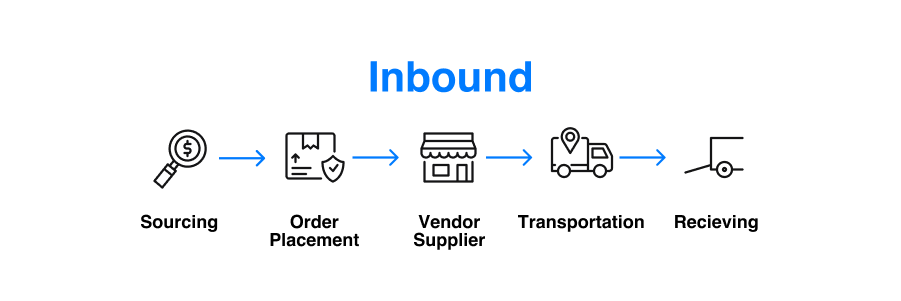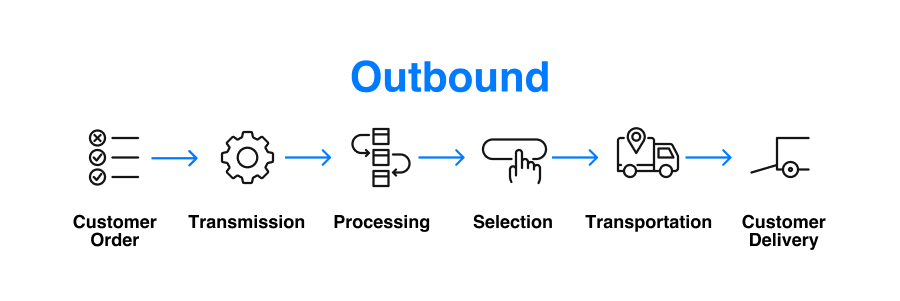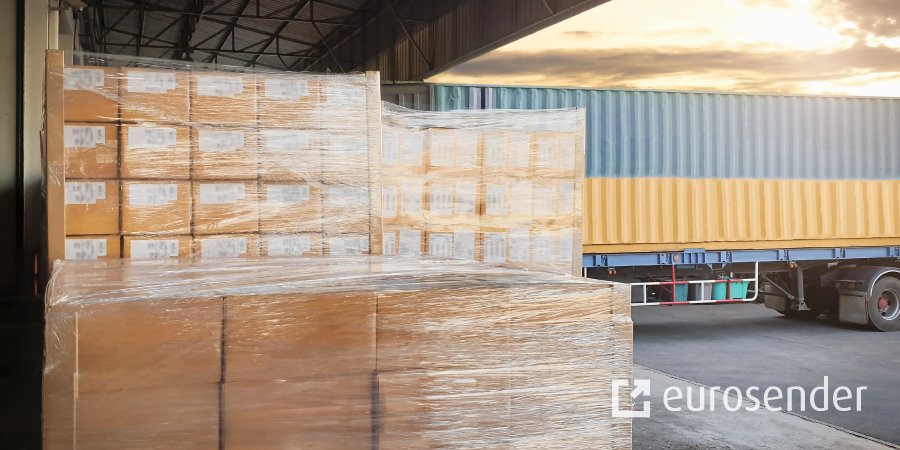Due to the complexity of the processes, businesses are looking for alternatives for efficient inbound and outbound freight transport. The first thing that will contribute to improving your supply chain is to understand the inbound and outbound logistics activities, by examples.
Understanding inbound and outbound logistics activities
To run an efficient business, you must ensure that both the inbound and outbound logistics activities are executed impeccably. By coordinating these activities around the customer’s requests, you will be able to deliver the products to the end-consumers in a timely manner. The delivery time is the most crucial factor when it comes to customer satisfaction and brand loyalty. Eurosender as a platform offering logistics services has chosen the most renowned logistics providers that will ensure we deliver what we promise you. Your freight at the right time, and the right place.
You may also be interested in:
Inbound logistics example
Every activity that is related to bringing materials to a plant, warehouse or retail store, for further processing or reselling, falls under the category of inbound logistics.
Bear in mind that you should not overstock inventory, as this can result in an additional need for warehousing. See if you can adjust the volume of input with the requested products to optimise your processes further.

E-commerce inbound logistics example
The inbound logistics for e-commerce businesses can be the acquiring of supplies that you will use for your business, receiving goods at a warehouse, or the return products from the customers. You can use or reuse these products, repurpose them or repair them. In this phase, the items are travelling to you, and you are not sending them away.
Inbound logistics example for a manufacturing plant
Let us suppose that you are a car manufacturer. Now, all the raw materials that are incoming to the plant for further processing are inbound activities. In this phase, transport for steel, rubber, plastics, glass and other things to the factory is still required. Once the input is in the factory, the manufacturing can proceed, and the workers can finalise the output. This chain will then need outbound logistics activities.
What does inbound transport cost?
The transport cost for inbound activities can vary due to the different companies and different items that are shipped. As a general note, the party that pays for the shipping should know the costs in advance, so there would be no unexpected and additional charges. Understanding these charges will help the company with budgeting.
Do not worry about what is the inbound transport cost for your company as at Eurosender; we will tell you the charges in advance. You can either check the transport costs directly with our booking engine or register as a business and receive countless benefits. By the frequent shipping requests, we can negotiate prices further; therefore, do not compromise on anything less but the most efficient solution. Register on our platform, and start receiving benefits.
Outbound Logistics example
The outbound logistics activities are those that handle the managing, selling and transporting of the finalised goods to the end-consumers.

Manufactured goods and e-commerce examples for outbound logistics
The process here is very much alike, whether you are a seller on a marketplace, or running a manufacturing plant. At this stage, you have to arrange shipping for the completed products from the warehouse (or plant), to the customer.
Firstly, the customer has to place the order, and then you need to arrange the packing if you have the requested inventory. Once the product is correctly prepared for transport, you hand in the shipment for delivery.
To show a specific example of outbound logistics, we can use the same case from earlier. Let us suppose that you are manufacturing cars. Once you have used all the raw materials in the manufacturing process, you have the outcome – the car. Then you receive the order that you need to send more cars to a dealership, or a customer, and you will need to arrange their transport. The process of delivering vehicles to the final destination is part of the outbound logistics activities.
What is the outbound transport cost for the company?
The outbound freight trucking cost varies depending on the products, the shipping service, and the destination point. If you are sending frequent orders to end-consumers, you should develop a relationship with the logistics providers. By doing so, you will benefit from cheaper rates, logistics specialists from the field that will be there to assist you at any step in the process, and real-time tracking of your orders.
Do not compromise on safety and delivery time, as these two are crucial when building trust with your customers. Organise the outbound freight trucking with the most well-known logistics providers, through Eurosender!
How can inbound and outbound logistics activities be improved?
- Plan your inventory. You should not overstock and order more materials than you need. Analyse your previous customer’s orders, and try to forecast future requests.
- Keep track of your orders. By having all of your shipping orders in one place, you will be able to calculate the monthly average transport costs with such ease. You will then use this information for future budget planning.
- Choose the right transport service. Did you know that many individuals and businesses overpay shipping, just by choosing the wrong shipping service? At Eurosender, every cent counts, and as such, our logistics specialists see to assist our users when choosing the right transport service.
Inbound and outbound freight activities do not have to be such a hassle. Join our network of registered users and anticipate all the costs in advance. Oversee all of your past, current and future shipping orders through our simple and carefully designed dashboard. Organised by us, managed by you!
Want to know more?
Check our articles that explore different topics within the logistics industry.
